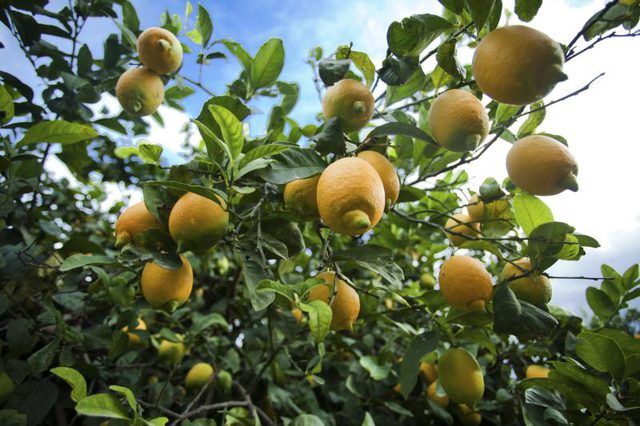Bulbs
Flower Basics
Flower Beds & Specialty Gardens
Flower Garden
Garden Furniture
Garden Gnomes
Garden Seeds
Garden Sheds
Garden Statues
Garden Tools & Supplies
Gardening Basics
Green & Organic
Groundcovers & Vines
Growing Annuals
Growing Basil
Growing Beans
Growing Berries
Growing Blueberries
Growing Cactus
Growing Corn
Growing Cotton
Growing Edibles
Growing Flowers
Growing Garlic
Growing Grapes
Growing Grass
Growing Herbs
Growing Jasmine
Growing Mint
Growing Mushrooms
Orchids
Growing Peanuts
Growing Perennials
Growing Plants
Growing Rosemary
Growing Roses
Growing Strawberries
Growing Sunflowers
Growing Thyme
Growing Tomatoes
Growing Tulips
Growing Vegetables
Herb Basics
Herb Garden
Indoor Growing
Landscaping Basics
Landscaping Patios
Landscaping Plants
Landscaping Shrubs
Landscaping Trees
Landscaping Walks & Pathways
Lawn Basics
Lawn Maintenance
Lawn Mowers
Lawn Ornaments
Lawn Planting
Lawn Tools
Outdoor Growing
Overall Landscape Planning
Pests, Weeds & Problems
Plant Basics
Rock Garden
Rose Garden
Shrubs
Soil
Specialty Gardens
Trees
Vegetable Garden
Yard Maintenance
How to Raise a Eureka Lemon Tree
How to Raise a Eureka Lemon Tree. Eureka lemon tree (Citrus limon "Eureka") is a frost-tender, thornless lemon cultivar originally developed in California. The self-fertile Eureka tree produces large, few-seeded fruits without another lemon tree nearby for pollination. Evergreen leaves, fragrant flowers and new purplish-colored growth...
Eureka lemon tree (Citrus limon "Eureka") is a frost-tender, thornless lemon cultivar originally developed in California. The self-fertile Eureka tree produces large, few-seeded fruits without another lemon tree nearby for pollination. Evergreen leaves, fragrant flowers and new purplish-colored growth offer ornamental interest. Like other citrus plants, Eureka requires specific cultural conditions to thrive.

Eureka lemon is hardy in U.S. Department of Agriculture plant hardiness zones 9 and 10, where it requires a bright, sunny location. Temperatures around 28 to 31 degrees Fahrenheit damage fruits and flowers. Where not hardy, the tree may be grown in a containers and moved indoors to a brightly lit windowsill from autumn to spring. Avoid windy sites, which cause fruit scarring, and provide at least 15 to 25 feet of space between Eureka lemon and buildings and other trees. Shady conditions will diminish flower and fruit production.
Plant Eureka lemon in a well-draining soil, avoiding heavy clay soils. If growing indoors, use a good-quality potting soil and a container with a hole in the bottom for drainage. In sandy soil, consider mixing equal parts topsoil or compost into the garden soil in the planting hole, before you plant the tree. Fertilize during the first year with 1 cup of a 21-0-0 fertilizer split into three applications and applied in February, May and September. Increase the amount of fertilizer annually by 1 cup. Scatter fertilizer evenly on the ground around the tree, watering deeply afterward, taking care not to get fertilizer on the trunk.
For the first few weeks after planting, water every couple of days, gradually reducing frequency of irrigation and watering every seven to 10 days. Aim to keep the soil moist but not waterlogged or flooded. Remove all weeds and turf from around the tree, as they compete for water and nutrients, inhibiting the growth of a strong room system. Do not mulch, as this increases the tree's susceptibility to develop the fungal disease foot rot if mulch sits on the trunk.
Check foliage occasionally for fungal diseases such as greasy spot and sooty mold and pests such as citrus leafminers, which leave tunnels on foliage and sometimes on fruits; mites, tiny sap-sucking insects; and scale, lumpy, motionless insects that form dense colonies on foliage and twigs. Sooty mold appears as a black coating covering the lemon foliage and is generally a sign that pests are present. It can be removed by washing the foliage off with water. Greasy spot generally occurs during times of high rainfall. Symptoms start off as yellow spots on the lemon's foliage and eventually turn into brown blisters, with leaf-drop leading to a weaker tree.To combat pests, mix 1 1/2 to 4 tablespoons of horticultural oil with 1 gallon of water and spray the entire tree canopy, including the undersides of leaves, until wet using a hose end or handheld sprayer. Do not spray if the tree is wilting or suffering from drought stress. To prevent foliage damage, do not spray oil on the tree if temperatures are above 90 degrees Fahrenheit or during sunny conditions. To combat greasy spot, spray the entire tree with a ready-to-use copper sulfate spray. You can also use the horticultural oil spray as you do with pests, mixed together with the ready-to-use copper sulfate spray. Store unused oil out of direct sunlight and away from food products.